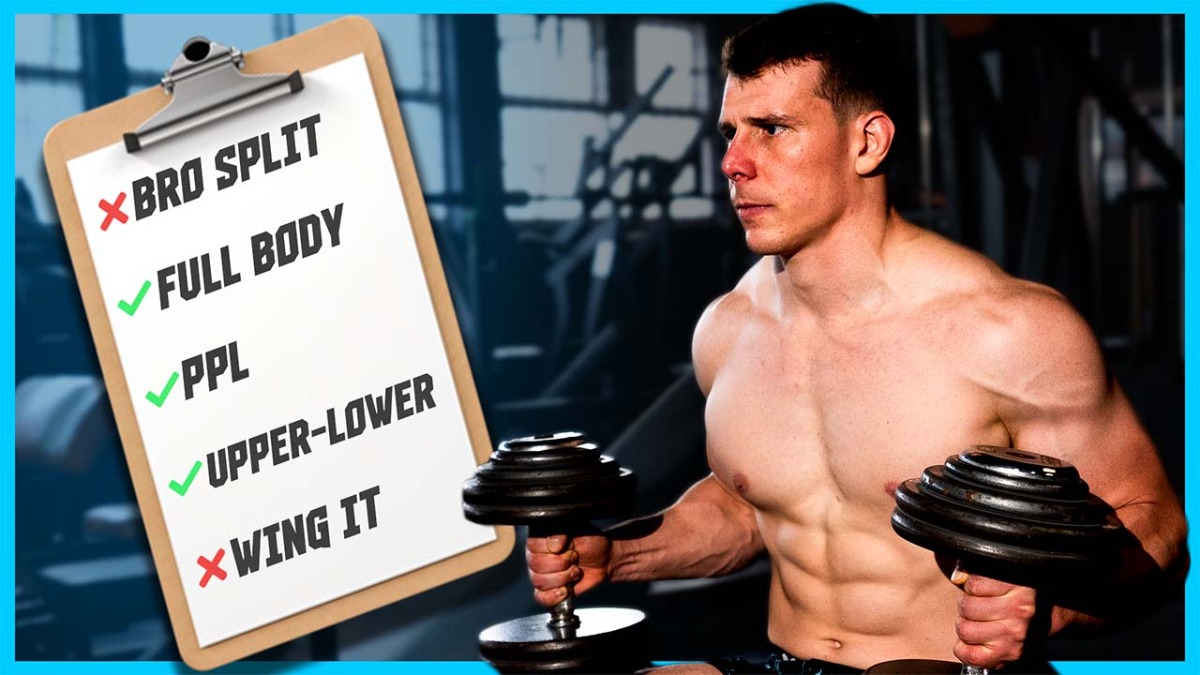best training splits for bjj?
Sep 30, 2024 9:42 pm
The Ultimate Training Splits for BJJ
Read Time: 4 mins
Read the online version here (recommended)
A training split is how you group exercises in a workout plan.
One common split is the "bro split." This is where each workout focuses on a different body part, like bodybuilders do:
- Day 1: Chest
- Day 2: Back
- Day 3: Shoulders
- Day 4: Legs
- Day 5: Arms
Another way to train is by doing full-body workouts. This is when you train all the muscle groups in every session.
There are many ways to group exercises, and new ones always come up.
I have worked with 1,000s of grapplers to get strong and reduce their risk of injury on the mats, so I've learned a thing or two about training splits.
So, what's the best training split for grapplers?
First, we'll look at the science, and then I'll give you my top 3 training splits to fit your schedule.
The Science of Training Splits
A 2024 study looked at the differences between full-body and body-part splits. They analysed 14 of the best studies from over 3,000 articles.
The result?
There's no difference in strength or muscle gain between full-body and body-part splits if the training volume is the same.
But, this research wasn't done on grapplers, so it might not be perfect for us. The majority of the studies looked at untrained men, not athletes in combat sports.
Practical Considerations
So, if the training volume is the same, full-body workouts are just as good as body-part splits. But let's talk about what works best for grapplers.
Grapplers are athletes, not bodybuilders or powerlifters. Our main goal is to improve performance for grappling and avoid injury.
With 2-3 (or more) BJJ sessions per week, lifting more than 3-4 times a week is hard without hurting your grappling performance.
This is why body-part splits aren't great for grapplers. You'll be training too often, which could interfere with your time on the mats.
Grapplers should lift weights 2-3 times a week.
Now, let's look at three great splits for that schedule:
- Full-Body Training
- Push-Pull-Legs (PPL)
- Upper-Lower Split
Full-Body Training
Full-body workouts are the best for grapplers.
You work all your muscle groups in each session. It's flexible, helps you avoid fatigue, and lets you recover between grappling sessions.
When you go from 5 workouts a week down to 2-3, bro splits don't work well anymore. You'll end up skipping muscle groups.
With full-body training, you don't need a set number of days to train each muscle group. It also makes it easier if you have to change your schedule.
Grapplers often miss workouts because they're too tired or busy with BJJ. If you keep skipping leg day (which usually happens, lol), it will lead to long-term muscle development issues.
But with full-body training, you work all muscle groups every session. So, no more skipped leg days.
It also has the added benefit of spreading the fatigue between muscle groups. Not focusing solely on one muscle group makes you less likely to have a bad case of Delayed Onset of Muscle Soreness (DOMs) on the mats.
Push-Pull-Legs (PPL)
Push-Pull-Legs (PPL) has become popular recently.
It's practical, versatile, and fun. In this split, you train based on movements instead of muscle groups:
- Push (horizontal and vertical)
- Pull (horizontal and vertical)
- Legs (squat, lunge and hinge)
This split helps you build strength for movements that matter in grappling, like guard passing, takedowns and escapes. It's also perfect for a 3-day-a-week schedule.
Yet, PPL has one problem—if you skip leg day, it becomes a "Push-Pull" program.
Also, when you get your leg workout in, your legs might be too sore during BJJ, making guard play and stand-up rounds tough.
PPL is also limited by a minimum of 3 days per week. It's not as flexible as a full-body training splits.
If you can only train twice per week, PPL is not for you.
Upper-Lower Split
The last split I recommend is the Upper-Lower Split.
This method splits your body into two: the upper body and the lower body. It's great for building strength and power without overworking any single muscle group.
You can either train upper body on one day and lower body the next, or mix both in the same session.
A good way to do this for grapplers is the condensed conjugate method (popularised by Phil Daru):
- Day 1: Upper body max effort + lower body dynamic effort
- Day 2: Lower body max effort + upper body dynamic effort
The upper-lower split isn't as easy to use if you want to train 3 times a week, though.
Some might say the second version of this split is just full-body training—and they'd be right!
Putting It All Together
The best training split for grapplers comes down to practicality and personal preference.
The research shows that there's no difference between full-body and body-part splits as long as the training volume is equal.
While the studies weren't specific to grapplers, my experience shows that full-body training works best. It's flexible, helps with recovery, and fits well into a 2-3 day training schedule.
In the end, it's all about what works best for you (but full-body is best, lol).
Click here to download my free 12-week full-body program for grapplers and start building strength that translates to the mats!
Get stronger, faster, and more powerful on the mats while reducing your risk of injury. Take my FREE Fitness Quiz here.
